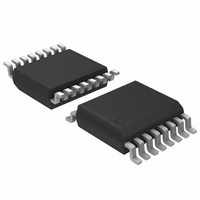ADM1023ARQZ ON Semiconductor, ADM1023ARQZ Datasheet - Page 11

ADM1023ARQZ
Manufacturer Part Number
ADM1023ARQZ
Description
IC SENSOR TEMP DUAL PREC 16-QSOP
Manufacturer
ON Semiconductor
Datasheet
1.ADM1023ARQZ.pdf
(16 pages)
Specifications of ADM1023ARQZ
Function
Temp Monitoring System (Sensor)
Topology
ADC, Comparator, Multiplexer, Register Bank
Sensor Type
External & Internal
Sensing Temperature
0°C ~ 120°C, External Sensor
Output Type
SMBus™
Output Alarm
Yes
Output Fan
No
Voltage - Supply
3 V ~ 5.5 V
Operating Temperature
0°C ~ 120°C
Mounting Type
Surface Mount
Package / Case
16-QSOP
Full Temp Accuracy
+/- 1 C, +/- 3 C
Digital Output - Bus Interface
Serial (2-Wire)
Maximum Operating Temperature
+ 120 C
Minimum Operating Temperature
0 C
Lead Free Status / RoHS Status
Lead free / RoHS Compliant
Available stocks
Company
Part Number
Manufacturer
Quantity
Price
Company:
Part Number:
ADM1023ARQZ
Manufacturer:
ADI
Quantity:
12 255
Company:
Part Number:
ADM1023ARQZ-REEL
Manufacturer:
IDT
Quantity:
56
Part Number:
ADM1023ARQZ-REEL
Manufacturer:
ADI/亚德诺
Quantity:
20 000
Configuration Register
which is the power−on default, the device is in operating
mode with the ADC converting (see Table 6). If Bit 6 is set
to 1, the device is in standby mode and the ADC does not
convert. Standby mode can also be selected by taking the
STBY pin low. In standby mode, the values of remote and
local temperature remain at the value they were before the
part was placed in standby mode.
ALERT output. If Bit 7 is 0, which is the power−on default,
the ALERT output is enabled. If Bit 7 is set to 1, the ALERT
output is disabled.
Conversion Rate Register
the conversion rate by dividing the ADC clock by 1, 2, 4, 8,
16, 32, 64, or 128, to give conversion times from 125 ms
(Code 0x07) to 16 seconds (Code 0x00). This register can be
written to and read back over the SMBus. The higher five
bits of this register are unused and must be set to 0. Use of
slower conversion times greatly reduces the device’s power
consumption, as shown in Table 7.
Table 5. Status Register Bit Assignments
Table 6. Configuration Register Bit Assignments
1 to 0
*These flags stay high until the status register is read or they are
5 to 0
Two bits of the configuration register are used. If Bit 6 is 0,
Bit 7 of the configuration register is used to mask the
The lowest three bits of this register are used to program
Bit
reset by POR.
Bit
7
6
5
4
3
2
7
6
RHIGH*
RUN/STOP
LHIGH*
RLOW*
LLOW*
OPEN*
Name
BUSY
MASK1
Name
At 1 when ADC converting
At 1 when local high temp limit tripped
At 1 when local low temp limit tripped
At 1 when remote high temp limit tripped
At 1 when remote low temp limit tripped
At 1 when remote sensor open−circuit
Reserved
0 = ALERT Enabled
1 = ALERT Masked
0 = Run
1 = Standby
Reserved
Function
Function
Power−On
Default
0
0
0
http://onsemi.com
ADM1023
11
Limit Registers
remote, high and low temperature limits. These registers can
be written to and read back over the SMBus. The high limit
registers perform a > comparison, while the low limit
registers perform a < comparison. For example, if the high
limit register is programmed as a limit of 80°C, measuring
81°C results in an alarm condition. Even though the
temperature range is 0 to 127°C, it is possible to program the
limit register with negative values. This is for
backward−compatibility with the ADM1021.
One−Shot Register
conversion and comparison cycle when the ADM1023 is in
standby mode, after which the device returns to standby.
This is not a data register as such, and it is the write operation
that causes the one−shot conversion. The data written to this
address is irrelevant and is not stored.
Serial Bus Interface
The ADM1023 is connected to this bus as a slave device,
under the control of a master device. Note that the SMBus
SDA and SCLK pins are three−stated when the ADM1023
is powered down, and they do not pull down the SMBus.
Address Pins
(except for some devices that have extended, 10−bit
addresses). When the master device sends a device address
over the bus, the slave device with that address responds.
The ADM1023 has two address pins, ADD0 and ADD1, to
allow selection of the device address, so that several
ADM1023s can be used on the same bus and to avoid
conflict with other devices. Although only two address pins
are provided, these pins are three−state and can be grounded,
left unconnected, or tied to V
different addresses are possible, as shown in Table 8.
powerup, so changing them after powerup has no effect.
Table 7. Conversion Rate Register Code
The ADM1023 has six limit registers to store local and
The one−shot register is used to initiate a single
Control of the ADM1023 is carried out via the serial bus.
In general, every SMBus device has a 7−bit device address
Note that the state of the address pins is sampled only at
0x08 to
0xFF
Data
0x00
0x01
0x02
0x03
0x04
0x05
0x06
0x07
Conversion/Sec
Reserved
0.0625
0.125
0.25
0.5
1
2
4
8
DD
Average Supply Current
, so that a total of nine
mA Typ at V
150
150
150
150
150
150
160
180
CC
= 3.3 V








